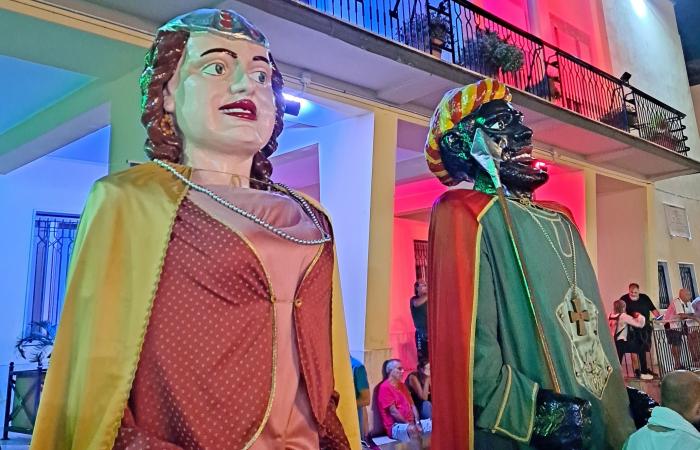Never heard of Calabrian Giants? Come and discover the story of Mata and Griffinthe famous couple of Giants of Calabriaand their folkloristic parade through the streets of the towns: the famous Dance of the Giants.
One of the most beloved events among the ancient Calabrese traditions, the Dance of the Giants stages the story of the two protagonists, the puppets Mata and Griffinwhich respectively represent a white noblewoman and a Moorish-Saracenic warrior.
Adults and children will be involved in a fun journey, crossing the streets of the celebrating towns, to the sound of the drums that accompany the entry of the Giants of Calabria!
The Calabrese Giants, Mata and Grifone
An integral part of local folklore, i Calabrian Giants Mata and Grifone they are actually identified with the legendary founders of the city of Messina. Reason why their geographical diffusion mainly concerns the coast of Middle and Lower Tyrrhenianamong the provinces of Vibo Valentia e Reggio Calabriaand the Lower and Middle Ionian up to the province of Catanzaro.
Which is true History of the Calabrese Giants?
In folk tales, it is said that a queen was kidnapped by a dark-skinned king who came from far away (probably an Ottoman Turk). The same version can also be found in Spanish folk culture, which is why it is believed that the History of the Calabrese Giants, Mata and Griffindates back to the period of Spanish domination in Calabria.
Specifically, it seems that the statues of the Giants of Calabria are completely similar to those used in the processions of some Spanish towns, such as Tarragona, for the feast of Santa Tecla.
Transmuted in Messina in homage to the Virgin Mary, Mata and Griffin land on the Calabrian coasts with a band and drums in tow. Among the various parades featuring the Giants of Calabriatwo above all deserve to be experienced with the whole family.
I Calabrian giants Of Tropea (VV) that parade through the streets of one of the The Most Beautiful Villages in Italy on the occasion of a very heartfelt anniversary: The Tri da’ Cruci (The Three of the Cross), historical re-enactment of Battle of Lepanto, which takes place every year on May 3rd.
In this circumstance, Mata and Griffin they parade through the streets of the village in the company of the silhouettes of the defeated Saracen boats, set on fire together with that of a camel. Here, there History of the Calabrese Giants is intertwined with that of the participation of as many as 1200 Tropean citizens in the Battle of Lepanto (1571), where they covered themselves with honor by chasing away the invaders.
The other major event featuring protagonists Mata and Griffin and the Dance of the Giants Of Palms (RC).
The town of Purple Coast boasts a centuries-old tradition of Calabrian Giants. In this case, their adoption recalls the historical event linked to the presence of Count Roger I, who precisely a Palms gathered his armies to invade Sicily, which is why the parade of Calabrian Giants it is here associated with papier-mâché horses.
Mata and Griffin they are the protagonists of a real palio (“Giants’ Palio”) which takes place through the city streets on the feast day of San Rocco (August 16). The palio is a long and heavy wooden pole with a red cloth hanging from it, which is made to turn around the town bowing to the faithful with a light movement, which is meant to symbolize a caress from the Madonna. The papier-mâché horse follows the Dance of the Giants in a festive atmosphere.
The Giants’ Dance
As we said, the historical root of Dance of the Giants it is of probable Aragonese origin.
I Calabrian giants Mata and Grifone they are two imposing papier-mâché puppets dressed in colorful robes and regal insignia, carried on the shoulders or pulled to the beat of drums on the occasion of Catholic holidays or particular historical re-enactments.
The anniversary of the Dance of the Giants It is full of meanings and symbols that overlap pagan and Christian rites. The parade is accompanied by the typical and pounding rhythm of the drums, to which is added the clapping of the crowd of believers and simple onlookers.
The rhythmic cadence of the “drumming” marks the dance of the Giants of Calabriawhich attracts young and old from afar.



